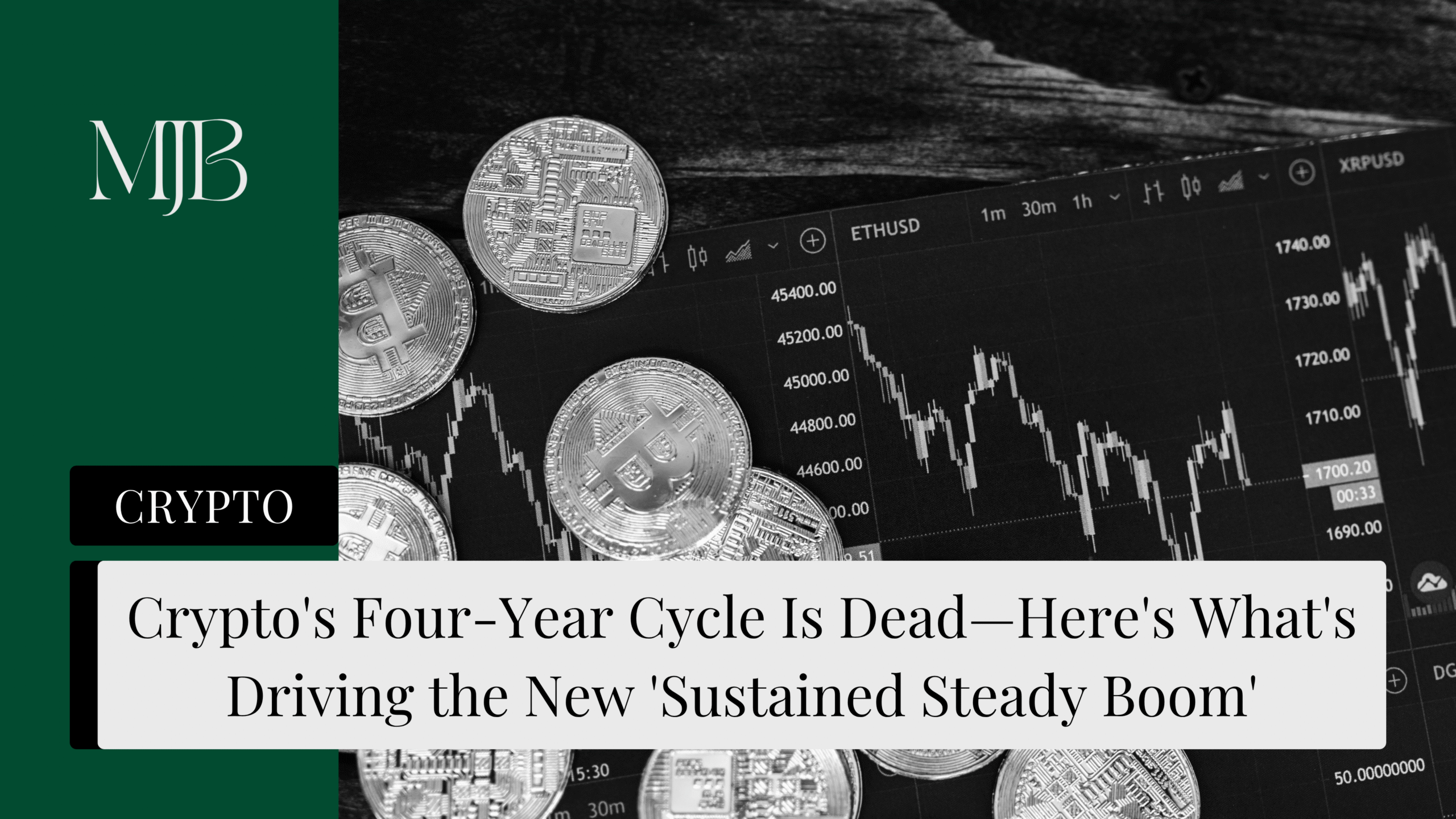Were you in the game when crypto followed a predictable four-year pattern? Those days could be over. According to Bitwise’s Chief Investment Officer Matt Hougan, we’re entering uncharted territory where institutional money, favourable regulations, and Wall Street adoption are creating something entirely different—a “sustained steady boom” that could make 2026 a standout year.
Why the Classic Crypto Four-Year Cycle Just Broke
The old playbook relied heavily on Bitcoin halvings and macro headwinds. Not anymore.
Hougan dropped this bombshell on X on July 25: “The forces that have created prior four-year cycles are weaker.” Translation? The drivers that used to dictate crypto’s boom-bust rhythm have lost their punch.
Interest rates, once crypto’s biggest enemy, are now playing nice. Plus, institutions have gotten smarter about risk management, reducing the catastrophic blowups that used to define bear markets.
But here’s the twist—there’s a new risk emerging: Treasury companies. Hougan flagged this as “the biggest emergent cyclical-style risk” worth watching closely.
What’s Really Moving Crypto Markets Now
Forget halvings. The real action is happening in boardrooms and regulatory offices.
ETF Money Is Still Pouring In
Exchange-traded funds are just getting started. We’re talking about a multi-year flow of assets that doesn’t care about Bitcoin’s four-year schedule. National account platforms are still approving crypto ETFs, and major pensions and endowments are just now dipping their toes in the water.
Wall Street Is Building Crypto Infrastructure
This isn’t retail FOMO anymore. Wall Street firms are committing billions to build on crypto infrastructure over the coming quarters and years. The momentum really kicked into high gear with the passage of the Genius Act this month.
Regulatory Clarity Is Creating Confidence
Remember when regulatory uncertainty killed every rally? Those days are fading fast. Developments that started in early 2025 are giving institutions the green light they’ve been waiting for.
The New Reality: Sustained Growth Over Explosive Cycles
Hougan’s prediction isn’t about another speculative supercycle. It’s about something more mature: “sustained steady boom.”
This shift means we might see less explosive volatility and more consistent growth as crypto becomes a standard asset class. The traditional four-year pattern of extreme highs followed by crushing lows could become a relic of crypto’s wild west days.
What This Means for 2026
Hougan’s cautiously optimistic about next year, but he’s not promising moon missions. Expect “significant volatility” to stick around—crypto wouldn’t be crypto without it.
The key difference? Instead of cycles driven by technical events like halvings, we’re looking at fundamental adoption trends that play out over much longer timeframes.
The Bottom Line
Crypto’s growing up. The days of predictable four-year cycles are ending as institutional adoption, regulatory clarity, and Wall Street infrastructure investment create new market dynamics. Whilst volatility isn’t going anywhere, the underlying forces driving crypto forward are now more sustainable and less tied to arbitrary technical events.
Want to stay ahead of these market shifts? Keep tracking institutional adoption and regulatory developments—they’re your new compass for crypto’s direction.
FAQ
Q1: Does this mean crypto won’t have bear markets anymore?
A: Not exactly. Hougan expects “significant volatility” to continue, but the extreme boom-bust cycles tied to four-year patterns may be less pronounced. Think steady growth with normal market fluctuations rather than massive crashes.
Q2: What’s the “Genius Act” and why does it matter for crypto?
A: The Genius Act passed this month and appears to be a regulatory framework that’s giving Wall Street firms more confidence to invest billions in crypto infrastructure. It’s one of the key catalysts for institutional adoption.
Q3: Should I change my crypto investment strategy based on this?
A: This analysis suggests focussing on long-term trends rather than timing four-year cycles. Consider the growing institutional adoption and regulatory clarity as fundamental drivers rather than technical patterns.
Q4: What are “Treasury companies” and why are they a risk?
A: While Hougan didn’t elaborate, Treasury companies likely refer to crypto firms holding significant Treasury assets, which could create new cyclical risks if these positions become too concentrated or leveraged.
Q5: When will we know if this prediction is right?
A: Hougan specifically called out 2026 as a test year. If crypto continues growing steadily without following traditional four-year patterns through 2026, it’ll validate this “sustained steady boom” thesis.
DISCLAIMER
Effective Date: 15th July 2025
The information provided on this website is for informational and educational purposes only and reflects the personal opinions of the author(s). It is not intended as financial, investment, tax, or legal advice.
We are not certified financial advisers. None of the content on this website constitutes a recommendation to buy, sell, or hold any financial product, asset, or service. You should not rely on any information provided here to make financial decisions.
We strongly recommend that you:
- Conduct your own research and due diligence
- Consult with a qualified financial adviser or professional before making any investment or financial decisions
While we strive to ensure that all information is accurate and up to date, we make no guarantees about the completeness, reliability, or suitability of any content on this site.
By using this website, you acknowledge and agree that we are not responsible for any financial loss, damage, or decisions made based on the content presented.






